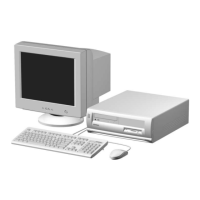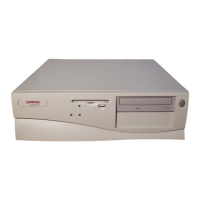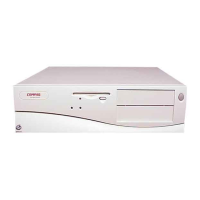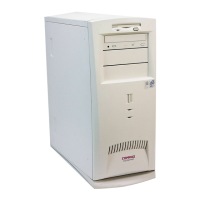2-6 Software Reference
2.4.2 Computer Setup Menu
Heading Option Description
File System Information Lists product name, processor type/speed/stepping, CPU
serial number, system ROM date, system board revision,
installed memory size, and asset tracking number.
Set Time and Date Allows you to set system time and date.
Save to Floppy Saves system configuration to a blank 1.44-MB diskette.
Restore from Floppy Restores system configuration from a diskette.
Set Defaults and Exit Restores factory default settings.
Ignore Changes and Exit Exits Computer Setup without applying or saving any
changes.
Save Changes and Exit Saves changes to system configuration and exits
Computer Setup.
Storage Diskettes Lists the currently installed drive A (preinstalled diskette
drive) and drive B devices.
Removable Media Enables/disables removable media booting and removable
media writing.
Note: After saving changes to Removable Media, the
computer will restart. Turn the computer off, then on,
manually.
IDE Devices Lists information regarding IDE devices connected to the
system. ATAPI devices (CD-ROM, DVD-ROM, tape) are
listed as ATAPI devices.
IDE Drive Timing Allows you to set hard drive to Ultra-DMA (Ultra-ATA),
EDMA, or PIO mode operation.
IDE Drive Translation Enables/disables IDE drive translation.
Boot Order Allows you to specify boot order of installed peripheral
devices (such as LS-120 drive, diskette drive, hard drive,
SCSI drive, CD-ROM drive, or DVD-ROM drive).
Security Setup Password Enables setup (administrator) password.
See the “Security Management” section of this guide for
more information.
Power-On Password Enables power-on password.
Specifies prompting for Power-On Password.
See “Security Management” for more information.
Password Options Enables/disables network server mode, keyboard
QuickLock, QuickBlank screen when locked, and
QuickLock in energy saver mode.
See “Security Management” for more information.
Note: This selection will appear only if a power-on
password is set.
Smart Cover Enables/disables Smart Cover Sensor and Cover Lock.
Also lists most recent cover removal. (Feature supported
on select models only.)
See “Security Management” for more information.
Device Security Enables/disables serial, parallel, and USB ports and audio
security.
continued
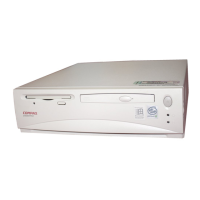
